Think back: Did your elementary school librarian wear a chicken hat and Chuck Taylors in the building? Did he or she dress up as a cartoon scientist? Dance to vinyl Elvis records? Perform a storybook while reading it aloud? No? Well, the librarian at Summit Road STEM Elementary School does all that — and much, much more. And, she has written a delightful, insightful and heartfelt book about her purposeful antics and the unexpected reactions of her young students.
In Rhonda Willford Eberst’s I Survived Pompeii: Hilarious Adventures in an Elementary School Library, the veteran educator shares what her students think and say (uncensored!), the out-of-the-box ways she teaches and guides them, and what educators must do to help children be the best they can be. When we contacted her about the book, she also told us about her most-unusual school library, filled with vintage technology and toys for exploration and play — as well as plenty of books for reading, of course:
Q: Tell us about yourself and your career in education. In your book, you express how important your work in theater has been to your job as a school librarian. How so?
A: I grew up in Jackson Hole, Wyoming, where you learn to work hard and play hard. Growing up in a tourist town gave me opportunities to go to work early. One of my first jobs was at Dirty Jack’s Wild West Theatre. The owners were a crazy mix of business, talent and, most of all, fun. Working with theater people helped me to understand that I could be myself, be funny and be a part of something grand.
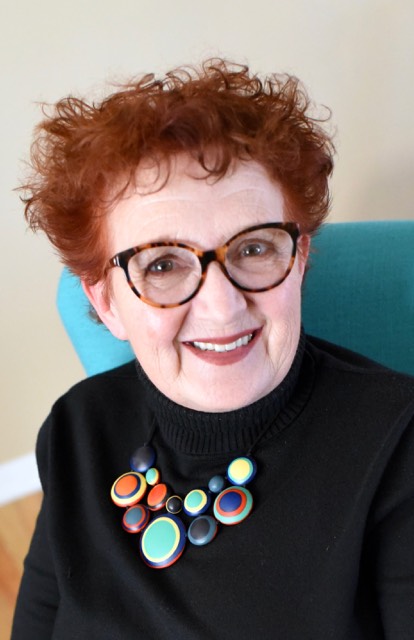 When I left Wyoming for Ohio, circumstances put the theater on hold. Over the years, however, I’ve pulled from those experiences and tried to apply them in my life. Though I have not been onstage in a very long time, I am on the stage every day with my students. I’m not entertaining them — I am using the humor skills that I polished in the past as a tool in working with my students.
When I left Wyoming for Ohio, circumstances put the theater on hold. Over the years, however, I’ve pulled from those experiences and tried to apply them in my life. Though I have not been onstage in a very long time, I am on the stage every day with my students. I’m not entertaining them — I am using the humor skills that I polished in the past as a tool in working with my students.
When I read to my classes, I don’t just read. Pictures books are meant to be performed. I know that performing a book as I read it to students engages them in the moment and shows them how much greater reading is when you aren’t just reading words. I tell my students that when they read they need to make a movie of the story in their minds. Design their set, picture the characters and what they are wearing. I tell them when I read I imagine that I am a character. Sometimes I write myself into the book as a friend of the protagonist. I want my students to live the books they read.
In I Survived Pompeii, I tell the story of reading Chocolatina by Erik P. Kraft. He writes of a girl who loves chocolate so much she turns into a chocolate girl. In my vignette titled “I’m Turning into Chocolate,” one of my students is so into the story that she starts to cry, fearing she is turning into chocolate. What follows is a funny, frustrating exchange between this child and me.
I thought she might be joking but found she wasn’t, and her fears were so strong that two years later she said to me, “Do you remember when I thought I was turning into chocolate. I really believed it!”
I told my husband that when I read to my students and wear silly hats I am feeding my theater bug, but, in truth, my students don’t see it as acting, they see it as that’s just how Mrs. Eberst is. I can grow old and senile in this gig — no one will know the difference.
Q: The first part of your book lays out your philosophy of education: “You can transform children’s lives by showing children they matter.” Explain how you follow this philosophy in your work.
A: Though I was very popular with my friends growing up, I didn’t have a great deal of confidence in myself. I was surrounded by friends and activities, but deep down inside I felt like an outsider. My home life was a bit different from my friends. I was, in my view, “fat” and not at all put together as I viewed how my friends and their families lived and communicated. I was not even close to being in the top of my class academically and believed that I wasn’t very smart.
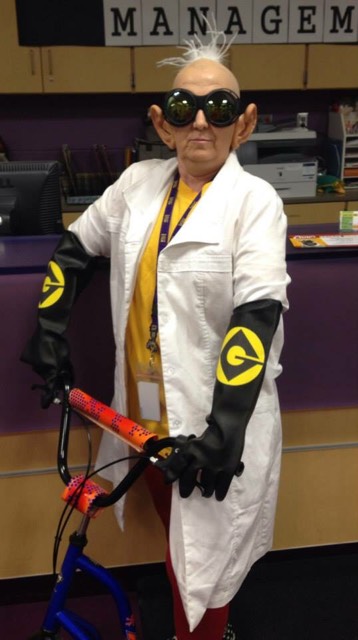
I didn’t feel I had value. So I overcompensated with humor and shined as the class clown. It was a teacher who knew how I really felt, though I thought I was hiding it. Mrs. Lawton, my English and drama teacher, recognized this in me.
The introduction to my book tells the story of how she changed my life by exposing my secret. She was the first adult who spoke directly to me, explaining that I had value and people liked me not just because I was funny. Because of this experience I am the educator that I am today.
I feel very strongly that if children are going to grow and be their authentic selves and become adults who thrive, they must know very early in life that they matter just as they are now — with their flaws and difficulties, with their talents and qualities. When they know in their heart that they matter to someone and that someone sees them and accepts them as they are, they begin to matter to themselves, and this is what changes their lives.
How children choose to hide their insecurities and disrupt the class and not work to their potential affects not only their personal learning but the impression of what kind of children they are.
I try very hard to see past the behaviors and remember how I saw myself as a kid and how one teacher helped me by showing me I mattered.
Q: The majority of your book is a treasure-trove of funny and touching vignettes of your interactions with young children. You write: “It’s the most challenging moments that help both you and your students be the best that you can be. These moments make the best memories.” Do you have one or two memories that stand above the others? Was sharing the memories the reason you wrote the book?
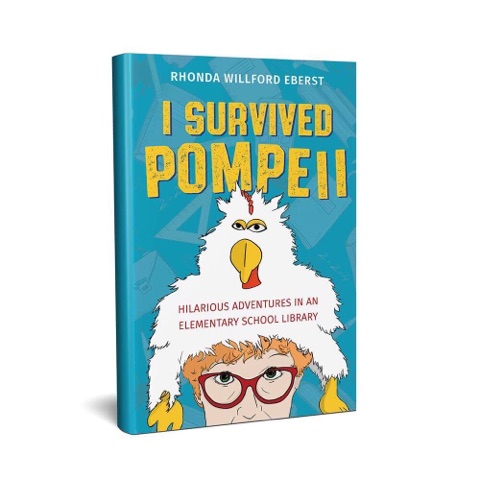
A: I originally set out to write a funny book and leave it at that. I have collected the stories over the years, retelling them in conversations on Facebook. I reconnected with Dr. Laura Bush who also grew up in Jackson Hole. She was several years younger than me in school, so I didn’t know her well.
Laura is a writing coach, editor and publisher. Her business is Peacock Proud Press. We became friends on Facebook. She would “like” many of my stories and make comments. One day, I asked her for some insight in writing a book.
Laura helped me find my voice. She helped me realize that as an educator I had more to say — not just make people laugh!
I could copy and paste my entire book here to answer the question concerning memories. The experiences that stand out to me are those when a student you’ve worked so hard to reach shows signs that you are reaching him, or when students come back after years and remember something you did or said to them.
I had a senior come back before she graduated and told me that I turned her on to reading. She hated reading, but after fourth grade and having me share books with her, she said, “I’ve never stopped reading.”
Another student came back, and when I saw him I knew his face though he was a much bigger boy than the last time I saw him. I apologized for not knowing his name. He started singing the lyric, “Jeremiah was a bullfrog.” Immediately it all came back. We sang and danced in halls of the school the song that I sang to him years ago. He said, “You sang that song to me every time you saw me. I liked it.” I liked it, too. I was thrilled he remembered.
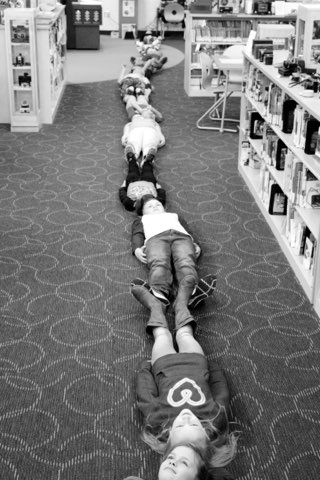
In my book, in a story titled, “I’ve Waited a Long Time for This,” I write about a boy named Jeremy. The first time I met him, he visited the library with his sister who was coming to Summit. He was at another school and on a waiting list. He was angry. His entire demeanor was angry. By the time he got in to Summit, he was still angry. No matter what any of us did, we could not reach him.
Once in a while, I would see him sneak a smile or look as if he was enjoying himself only to come back the next day with a hard shell more impenetrable than the day before. I decided I was going to reach him.
He was in the second grade, and I was directing a second-grade performance. I asked him to be a stagehand and move a set around and handle props. It had to happen at just the right time in the show. He had told his teacher he wasn’t coming to the performance, but when I asked him to do this important job his face lit up.
He came to the show, did his job and never said a word. The next day, he thanked me. Afterward, he still got angry. He still struggled to smile, but we were slowly peeling away his hard shell.
One day, he dropped off a note to me and went back to class without saying a word. I read the note and had to compose myself before I went to talk to him. He wrote: “Dear Mrs. Eberst, thank you for being a great Librarian and thank you for always showing me the new books. You are the number one Librarian that I have ever met. Know that I love you. You believe in yourself, and you are so kind that I think all the kids love to see you. Just to say that I am very close to you and that you are the funniest teacher.” He signed his name with a big heart.
I walked to his classroom where he was working at his desk and, kneeling down, I said, “Thank you. I am glad we are friends.” I had tears in my eyes. He smiled so sweetly and whispered, “You’re welcome.” I had waited a long time for this.
Of course, the funniest parts of the book are the experiences where children test the waters with their conversations of inappropriate topics. There is an entire chapter dedicated to those.
Q: Being silly with your students is an important part of your interactions at school. Tell us how wearing Chuck Taylors and silly hats, including the chicken hat, help you to build bonds with your students. What other lighthearted rituals do you follow at school, and why?
Q: The first hat I bought when I became a librarian was my chicken hat. I had one chicken hat and one pair of Chuck Taylor Converse sneakers. The Chuck Taylors are homage to my days at Dirty Jack’s. In one show, a western, we replaced cowboy boots and dance shoes with Chuck Taylors.
As the years passed, more hats were purchased as well as shoes. The students look for the shoes and love showing me theirs. One year, a parent asked me why her child needed Chuck Taylors for the library. He had told her they were on the school supply list.
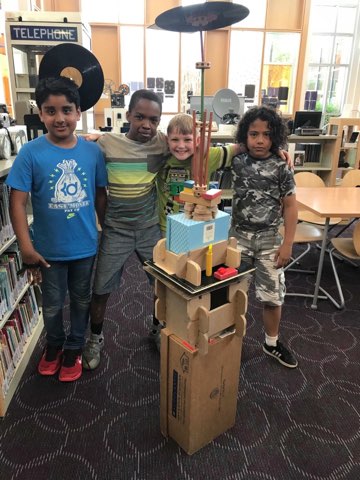 I work with kids. They get excited when they see me. One student told me: “We like you more than the rest of the teachers because you’re more like one of us.”
I work with kids. They get excited when they see me. One student told me: “We like you more than the rest of the teachers because you’re more like one of us.”
There are things I do year after year that students keep asking for. They love the library dance that shows them how to use their shelf marker. They wait for me to dismiss them from the reading corner to get books with, “I want beautiful shelves,” and they respond, “Not uuuugggllly!” We practice our creative writing, thinking and speaking skills when they forget their library book. They have to stand in front of the class and tell a story about why they forgot their book. “I forgot” is not an acceptable answer and bores the librarian. They must take a minute and create a tale from their imagination.
We have a chopped challenge where teams of students get boxes of items from the library and build a tower.
The favorite of all is listening to music from the Blues Brothers, Frank Sinatra and Elvis on a record player. This activity ends with an Elvis Presley imitation contest.
Q: In your book, you reference using the STEM design method to solve conflicts that come up among your students. How do you weave such STEM concepts into your role as a librarian?
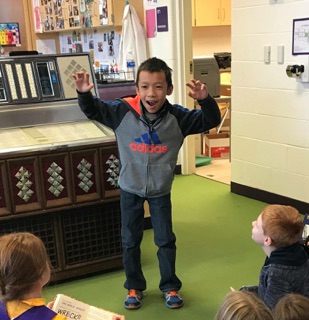
A: We use the design cycle in everything at Summit. I have called on it while doing read-alouds, asking how the characters in the story use the design cycle in books such as Monkey With a Tool Belt or Randy Riley’s Really Big Hit.
I use the design cycle to solve students’ conflicts such as, “She is talking about me,” or, “He hit me.” Instead of a lecture or sending someone to the office, we redesign what happened and see what would work better.
In my book, I have a story where we go back to the design cycle to create the best possible “checkout” line at the circulation desk after a student is constantly complaining that “he cut” or “she cut” in the line.
Q: The library at your school is called the Living Library Museum and is filled with vintage technology that the students can try out. Tell us how it all came about, and how students benefit from exposure to the display items. You also have students working in the library. Tell us about that, too.
A: When I came to Summit, I had a fairly good collection of “old stuff” that I had used in my life. And, my blessed mother-in- law never threw anything away, so when she passed on I got her items. I used them as displays in the library.
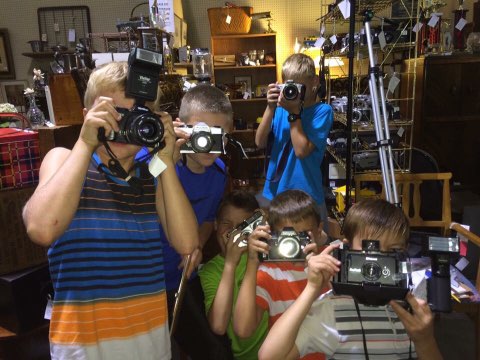 A former superintendent mentioned that some of the items were museum quality. So, with the help of Dr. Dan Hoffman (former assistant superintendent of Reynoldsburg City Schools), who introduced me to Dr. Kerry Dixon (of Ohio State University), we created a partnership, applied for a Battelle STEM grant and created the Summit STEM Living Library Museum.
A former superintendent mentioned that some of the items were museum quality. So, with the help of Dr. Dan Hoffman (former assistant superintendent of Reynoldsburg City Schools), who introduced me to Dr. Kerry Dixon (of Ohio State University), we created a partnership, applied for a Battelle STEM grant and created the Summit STEM Living Library Museum.
With the grant we were able to bring in professionals to work with our 20 third- and fourth-grade student-curators. Students had to apply, be interviewed and sign a contract to be curators. There were cheers for those who made the team, and tears from those who didn’t. These students worked with me and Dr. Dixon to design the Library Museum.
My vision was to give our kids a “wow” moment backward. They are children of technology and want the biggest and brightest next-best-thing. I felt they couldn’t really appreciate what they have or be the inventor of the next thing if they didn’t know about, and learn to appreciate, where it all came from.
The museum is filled with vintage technology. There is a vintage living room display with a magazine rack and a coffee table in front of a black-and-white TV with a vintage Atari. Pong is the game of choice, which most staff members can win!
We have a theater with an old movie projector. We have a telephone booth and a collection of telephones. We have displays of cameras, computers, radios and vinyl records. Donations from the public come in all of the time. We’ve had many senior citizens bring in items that they know their children will throw away when they are gone. The extra items are stored or put in our Exploration Station. After students get their library books they have time to explore.

We also have old toys (Lincoln Logs, TinkerToys, wooden blocks). Children need to play. They spend so much time on technology that they don’t always get to create.
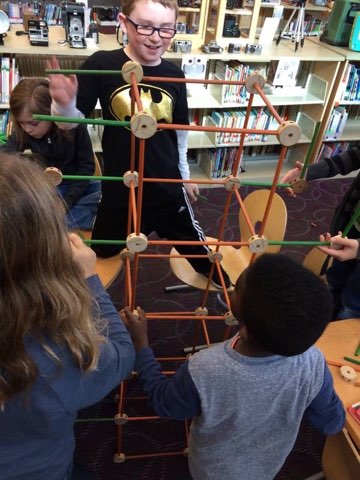 There is a story in my book about a group of boys sitting in a circle with telephones pretending to make prank calls. “Prank Calls” tells the story of how I show them how a real prank call is made. I gained a new respect from the boys, but I warned them that when I was a master at prank calls there was no such thing as caller ID.
There is a story in my book about a group of boys sitting in a circle with telephones pretending to make prank calls. “Prank Calls” tells the story of how I show them how a real prank call is made. I gained a new respect from the boys, but I warned them that when I was a master at prank calls there was no such thing as caller ID.
Classes are now using the vintage collection in projects to learn about time lines and create and present videos of technology over time. We have had people in to talk about what life was like with a rotary phone or a vintage radio. Our goal over the next few years is to document these items on video by creating stories of people who lived and worked at the time the items were used. This truly gives our kids a “wow” moment! They love to explore and learn the history of what we have in our collection.
The telephone both is the best. Once a kindergartner went inside, picked up the receiver, then opened the door from the inside and, with a puzzled look, asked, “How do you text?”
The Library Museum is a student-run library. Every class has four student librarians, and each week they rotate working at the desk. Like the curators, they apply, are interviewed and must keep up on their class work to keep the job. The student-librarians start the class by welcoming the students, reading the list of missing books and running the circulation desk.
Sometimes the person they have to work with in the library is not a person of their choice. Those are learning experiences. To give all kids a sense that this is their library, I no longer have students pay for their first lost library book if their parents are unable to pay. Students have to give up two recesses and work off their debt. Sometime they are dusting library shelves or wiping off tables. Sometimes they join me in lunch duty and help take care of the needs of other students during lunch. I found I have fewer students who lose a second book — even though they like to come in and help! But they would be much happier about it if it wasn’t during recess.
Q: How has your approach to your work and to your students changed over the years? What advice would you give the novice educator who is struggling to find his or footing?
A: When I first became a librarian, I was so strict about how the shelves looked. I was so strict about books coming back on time and how many that the students checked out.
I began to relax after a short time, and though I like the shelves tidy, I would much rather have a well-explored shelf than a tidy one. And, I remind myself that those students who are disruptive and have a chip on their shoulder can be reached.
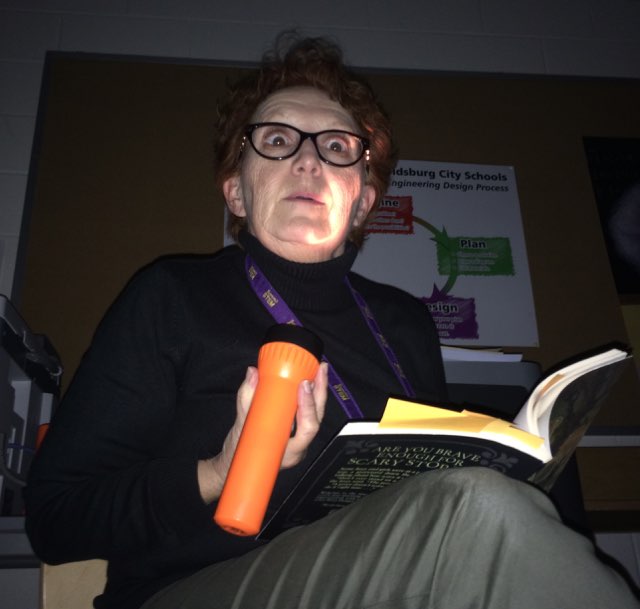 I allow students to check out four books at a time. I don’t limit them as I once did by their reading levels. I tell kids they need books that turn them on to reading. If they can’t read it, they can’t get turned on. So I let them try. My job is not to teach students how to read but to turn them on to reading.
I allow students to check out four books at a time. I don’t limit them as I once did by their reading levels. I tell kids they need books that turn them on to reading. If they can’t read it, they can’t get turned on. So I let them try. My job is not to teach students how to read but to turn them on to reading.
I guide kindergartners to the nonfiction shelves at the beginning. When you see eyes light up because of the dinosaur book in one hand and Dr. Seuss in the other, I no longer have a rigid view of what books the students check out.
I have learned over the years to relax. I have learned over the years to be myself. I have learned over the years that it’s okay to make mistakes, to apologize to a student or to let them see you cry. But most important, I have learned that you must let them see you laugh, and they must know that you are on their side and that they matter to you.
I would tell new educators that this gig isn’t easy. They have to relax. They must be themselves. They don’t always have to have it all together. They have to love their children. They need be open to the help and support of seasoned educators and know how to collaborate. They must get to know the parents and guardians of their students.
It is a different world in education from that of our students’ parents. If a child’s parents know that the child matters to you, even if they don’t agree with your assessments, they will work with you and be supportive.
I would tell new teachers to hang in there because there is no greater gig.
Q: Is there anything else you would like to share about your book or your career as an educator? What about your belief that “learning should be heard”?
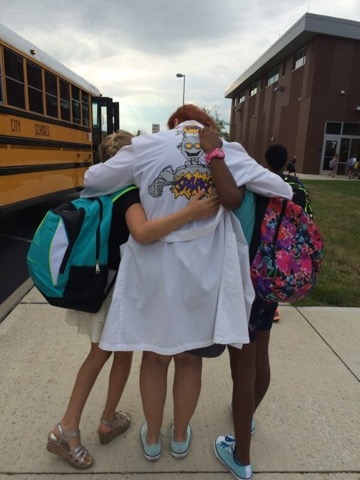 A: We do not have a quiet library, to the dismay of the surrounding classrooms. Children should be heard. They should ask questions, they should talk about what they are reading. When they explore, a.k.a. play, with the vintage items and toys they should be heard. They should be talking, they should be creating. They should be laughing! If it’s too quiet then I am concerned.
A: We do not have a quiet library, to the dismay of the surrounding classrooms. Children should be heard. They should ask questions, they should talk about what they are reading. When they explore, a.k.a. play, with the vintage items and toys they should be heard. They should be talking, they should be creating. They should be laughing! If it’s too quiet then I am concerned.
I love my job with Reynoldsburg City Schools. I have been blessed with administrators who let me do my thing. They let me march to my own drum and dance to my own beat. That is what I want my students to do.
While in elementary school, I want them to begin to discover their genuine selves. I want them to know this is the time to make mistakes and learn how to fix them because they are surrounded by people who love them and care about them as people and not just as students in a classroom.
I wrote I Survived Pompeii: Hilarious Adventures in an Elementary School Library because kids matter to me. The district I work for matters to me. The staff I work with matters to me. For these reasons, I wrote in my genuine voice, which is humor. I hope all educators are comfortable speaking and teaching in their genuine voice, and through that they build lifelong relationships with kids.
You can meet Rhonda in her library this Wednesday
Wednesday, April 11 at 6:30 PM – 8 PM
Summit Road Living Library Museum at Summit Stem Elementary School
8591 Summit Rd.
Reynoldsburg, Ohio 43068
Edited by Patricia Bitler, freelance writer and editor, for Battelle. Battelle manages the Ohio STEM Learning Network.